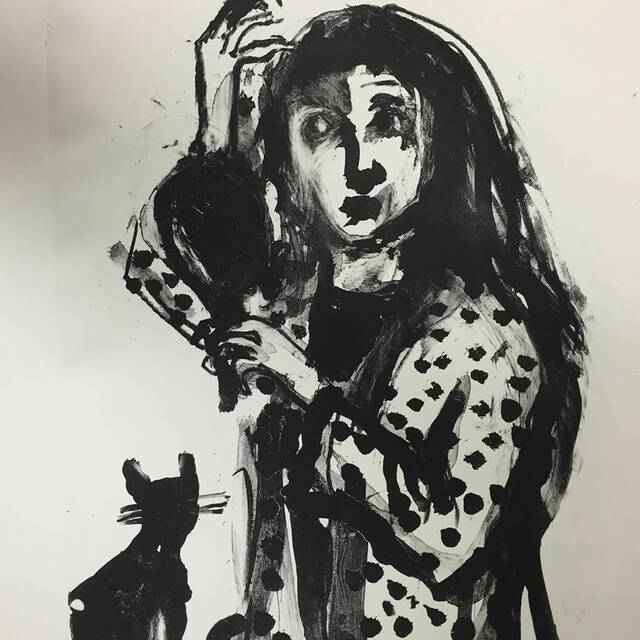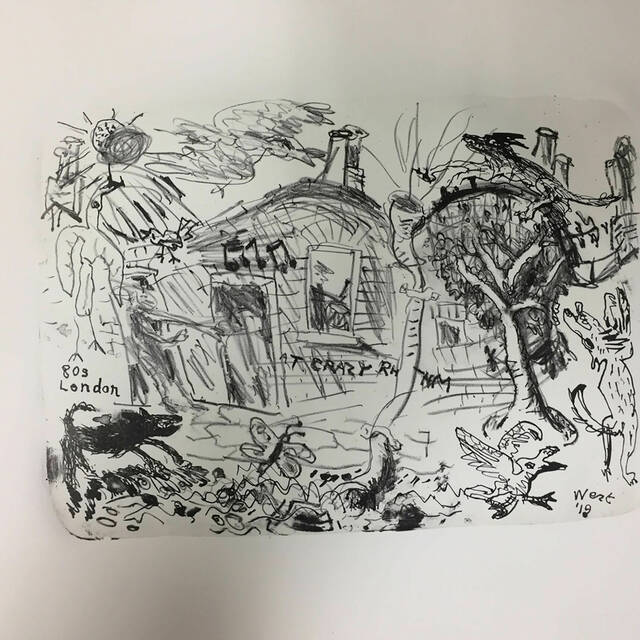We present a small exhibition of prints by Shani Rhys James and Stephen West.
All of the prints are lithographs or etchings. They have been produced alongside masterprintmakers including Paul Croft ARE, Chris Nurse, and Paul Trivett.
LITHOGRAPHY
The artist draws onto stone using a grease-based medium - normally special lithographic crayons, or greasy ink known as tusche. The stone is then treated with a chemical solution that ensures the image will attract printing ink, and that blank areas repel ink and attract water. A solvent ‘fixes’ the image, and the surface is dampened with water. Oil-based ink is then applied to the stone with a roller, adhering only to the image. Finally, the stone is placed on a lithographic press and covered with damp paper and board - a pressure bar ensuring force is evenly applied across the image. The image is printed in reverse, with separate stones used for complex images of multiple colours.
Lithography was first made famous by Toulouse-Lautrec in the 19th century, but has been embraced by many of the major artists of the Post-War period, including Picasso, Miró, Hockney
ETCHING
Using an etching needle, an artist scratches an image onto a metal plate covered with wax. This plate is then submerged in acid, which eats into the metal exposed by the scratched lines. The longer the plate is left in the acid, the deeper and darker the line will be. The plate is cleaned, inked, and cleaned again, leaving only the incised lines filled with ink. Dampened paper and a protective cloth are placed over the plate, which is squeezed through an etching press - the pressure forcing the paper into the etched lines to pick up the ink. The image is printed in reverse, and an indentation, known as the ‘plate mark’, is left by the plate’s edges. Etching has often been used to achieve extremely delicate black and white images, from the Old Master period through to modern times. Rembrandt famously used this technique to achieve atmospheric effects, and Lucian Freud, and Paula Rego continued the tradition into the 21st century.



